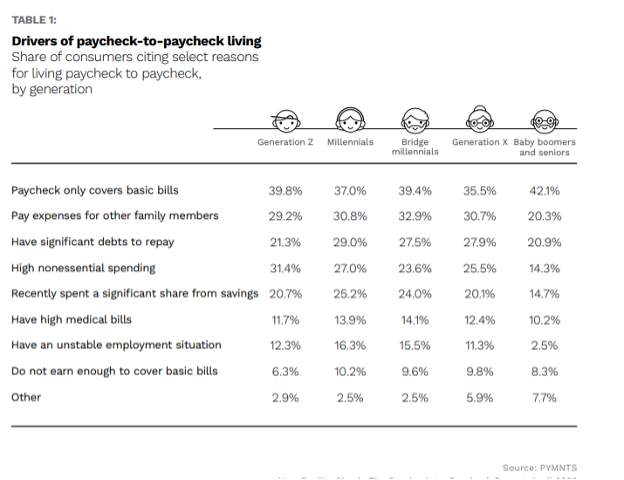Inflation Slows, but Everyday Essentials Still Pinch Paycheck-to-Paycheck Consumers

Wall Street is parsing the latest inflation data, gaming the odds of another Fed rate hike — or pause.
And while the headline data show that consumer prices overall rose in May at the slowest pace in just over two years, the reality is that the essentials of everyday life are still expensive.
That’s especially true of food, which has seen a renewed tailwind of upward pricing pressure — and will further pinch paycheck-to-paycheck consumers, with some negative ripple effects for some Main Street merchants.
The Consumer Price Index (CPI) data released Tuesday (June 13) by the Bureau of Labor Statistics show that consumer prices were up 0.1% in May as measured against April, and up 4% year on year. The annual pacing represents a slowdown from the 4.5% rate seen in April of 2023 vs. a year ago.
Food on the Table Is More Expensive
But.
Drill down a bit, and the data also show that the food index rose 0.2% in May. The food at home index increased 0.1% over the month, following a 0.2% decrease in April and a 0.3% decline in March. Thus: Groceries are more expensive — and are in fact 5.8% higher than seen a year ago. Egg prices have finally declined but the costs of items such as vegetables and fruit (up 1.3% in May) have blunted at least some of that impact.
Shelter? The shelter index has leapt 8% year on year and was up 0.6% month over month in May. Getting around is proving more expensive too. After several months of declines, the index for used vehicles was up 4.4% month on month, for the second month running.
If shelter, food and transportation continue to show “sticky” signs of inflation, then the headwinds are in place for discretionary purchases. Those discretionary items continue to get more expensive too. Apparel stands out here, where the CPI shows the index for clothing was up 0.3%, yet again, a three-month streak at that pace.
The table below signals the fact that paycheck-to paycheck-consumers — at 60% of the U.S. population — are aware that non-essential spending and the fact that incomes cover only the basics of life are forcing them to walk a tightrope every month.

The CPI data may signal a rough road for at least some Main Street merchants headed into the remainder of the summer and especially into the Fall/holiday shopping season. The National Federation of Independent Businesses (NFIB) reported Tuesday that its Business Optimism Index rose 0.4 points in May to 89.4, representing nearly a year and a half of that index remaining below the 49-year average of 98%. A full 25% of owners reported that inflation was the single most important problem in operating their business, up 2 percentage points from April.
In the meantime, as PYMNTS data show, Main Street merchants — specifically, 43% of small and medium-sized businesses (SMBs) — say that inflation is the single greatest issue they face.
Inflation may be slowing, but it continues to be a real and present challenge for U.S. consumers and the SMBs whose fate depends on them.

